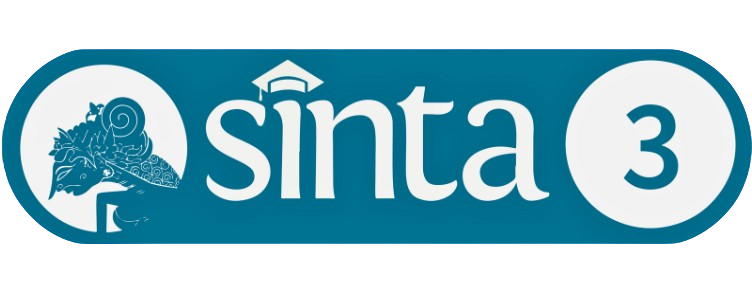Hubungan Health Belief Model pada Perilaku Prevensi saat Pandemi Covid-19 di Kalangan Dewasa Awal
Unduhan
Pandemi COVID-19 di Indonesia terus berkembang, dengan 79,6% dari total kasus terdiri dari 18-45 tahun (per 20 Agustus 2020). Berbagai cara terus dikembangkan oleh ahli kesehatan untuk menekan angka penularan, salah satunya melalui pencegahan. HBM merupakan model yang kerap digunakan untuk memahami persepsi individu terkait perilaku kesehatan, termasuk prevensi. Penelitian dilakukan dengan survei online sebesar 231 responden, menggunakan alat ukur yang disusun dari awal untuk HBM serta alat ukur adaptasi untuk perilaku preventif. Studi menunjukkan hubungan signifikan HBM dengan perilaku preventif. Pada dimensi perceived susceptibility, perceived severity dan perceived benefit menunjukkan hubungan positif dengan perilaku preventif, sedangkan perceived barriers menunjukkan hubungan negatif dengan perilaku preventif. Ditemukan bahwa HBM adalah salah satu model yang dapat menggambarkan perilaku preventif saat pandemi, namun terdapat hal lain berupa tingkat pendidikan, selfefficacy, serta pengetahuan terhadap kondisi kesehatan tersebut. Penelitian memiliki berbagai kelemahan, yaitu sebaran kelompok usia yang tidak merata, serta kuesioner self-report yang rawan bias.
Abraham, C., & Sheeran, P. (2015). The Health Belief Model: Predicting and Changing Behavior. New York: McGraw-Hill.
Barakat, A. M., & Kasemy, Z. A. (2020). Preventive health behaviours during coronavirus disease 2019 pandemic based on health belief model among Egyptians. Middle East Current Psychiatry, 43.
Bish, A., & Michie, S. (2010). Demographic and attitudinal determinants of protective behaviours during a pandemic: A review. British Journal of Health Psychology, 50-62.
Gugus Tugas Percepatan Penanganan COVID-19. (2020, Agustus 20). Peta Sebaran COVID-19. Retrieved from Gugus Tugas Percepatan Penanganan COVID-19: https://covid19.go.id/peta-sebaran
Hurlock, E. B. (1986). Developmental Psychology: A Life-Span Approach. New York: McGraw-Hill.
Janz, N. K., & Becker, M. H. (1984). The health belief model: A decade later. Health education quarterly, 1-47.
Jeong, H. S., Lee, D. W., Youn, C. H., Lee, M. K., Lee, S. J., Suh, Y. S., & Kim, D. H. (2010). Perception and Performance of Preventive Behaviors for the Pandemic Influenza in Hospital Employees and Outpatients. Yonsei Medical Journal, 181-187.
Manika, D., & Golden, L. L. (2011). SELF-EFFICACY, THREAT, KNOWLEDGE AND INFORMATION RECEPTIVITY: EXPLORING PANDEMIC PREVENTION BEHAVIORS TO ENHANCE SOCIETAL WELFARE . Academy of Health Care Management Journal, 31-44.
Miao, Y.-Y., & Huang, J.-H. (2012). Prevalence and associated psychosocial factors of increased hand hygiene practice during the influenza A/H1N1 pandemic: findings and prevention implications from a national survey in Taiwan. Tropical Medicine & International Health, 604-612.
Niu, Z. W. (2020). Chinese Public's Engagement in Preventive and Intervening Health Behaviors During the Early Breakout of COVID-19: Cross-Sectional Study. Journal of medical Internet research, 8.
Our World in Data. (2020). Emerging COVID-19 success story: Vietnam's commitment to containment. Our World In Data.
Park, J.-H., Cheong, H.-K., Son, D.-Y., Kim, S.-U., & Ha, C.-M. (2010). Perceptions and behaviors related to hand hygiene for the prevention of H1N1 influenza transmission among Korean university students during the peak pandemic period. BMC Infectious Diseases.
Rosenstock, I. M. (1974). Historical origins of the health belief model. Health education monographs, 328-335.
Shahnazi, H. A.-L. (2020). Assessing preventive health behaviors from COVID-19: a cross sectional study with health belief model in Golestan Province, Northern of Iran. . nfectious.
WHO. (2020, June 4). Coronavirus disease (COVID-19) advice for the public. Retrieved from World Health Organization Website: https://www.who.int/emergencies/diseases/novel-coronavirus-2019/advice-for-public
Worldometer. (2020, Agustus 20). COVID-19 Coronavirus Pandemic. Retrieved from Worldometer: https://www.worldometers.info/coronavirus/#countries
BRPKM adalah terbitan berkala dengan akses terbuka Creative Commons Attribution 4.0 International (CC-BY 4.0) sehingga hak cipta tetap berada di tangan penulis.
Dengan lisensi ini, siapapun berhak menggunakan informasi dan melakukan re-distribusi konten yang dimuat dalam jurnal ini untuk kepentingan apapun, termasuk kepentingan komersial. Hal tersebut dapat dilakukan selama memenuhi dua kondisi, yaitu; (1) anda harus memberikan atribusi dengan mengutip sumber tautan aslinya, dan menyatakan apabila ada perubahan yang dilakukan; dan (2) anda tidak dapat menggunakan ketentuan hukum atau sarana kontrol teknologi yang secara hukum dapat membatasi orang lain untuk melakukan hal-hal yang diizinkan oleh lisensi ini.
Redaksi jurnal tidak akan meminta penulis untuk melakukan persetujuan transfer hak cipta atas semua naskah yang diterbitkan.










